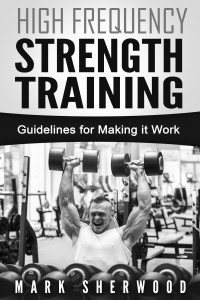 One of the concepts of Precision Point Training is to only train as long as you are strong during a set, and to only continue doing sets for a body part as long as you are strong. When fatigue sets in, your reps grow weaker at the end of a set. You also lose the ability to do as many reps per set which is the definition of a weak set. My advice is to basically avoid doing weak reps and weak sets that occur as fatigue accumulates.
One of the concepts of Precision Point Training is to only train as long as you are strong during a set, and to only continue doing sets for a body part as long as you are strong. When fatigue sets in, your reps grow weaker at the end of a set. You also lose the ability to do as many reps per set which is the definition of a weak set. My advice is to basically avoid doing weak reps and weak sets that occur as fatigue accumulates.
Most people won’t be doing long workouts if they adhere to the concept of avoiding weak sets, nor will they be straining during their workouts if they avoid weak reps. Because of this, workouts are not excessively long or hard and recovery is easier than when doing workouts that produce fatigue. When recovery is easier, you may find that you don’t need as much rest between workouts and you can work out more frequently.
Low fatigue workouts that are done frequently can have a benefit of keeping the nervous system fully turned on between workouts. Tsatsouline Pavel, the famous trainer from Russia refers to high frequency training as “greasing the groove,” as the frequent firing of the nervous system improves its ability to signal strong contractions.
Force and Frequency Training
One of the problems that can occur when lifters workout heavy on a frequent basis is that some aspect of their physiology can begin to wear down. They may simply grow tired of heavy weights, or have a joint or muscle that starts causing problems from frequent heavy use. One of the solutions for this is what I refer to as force and frequency training. Force and frequency training is almost like mini workouts that can be used between heavy workouts that are being done only once or twice per week. More explanation is needed.
Force and frequency workouts are brief non taxing workouts using 40 to 50 percent of your one rep max for basic exercises such as presses, squats, deadlifts, and rows. I suggest that you only use 40% rather than 50% if you do a force and frequency workout the day before a heavy workout. Using weights with these percentages should permit the weights to be lifted with and high amount of speed and force. The idea is to keep your nervous system revved up while avoiding fatigue that would cut into your strength for your heavy workouts.
A force and frequency workout should be short and sweet with 4 sets of 5 reps for each basic exercise that you do. The weights should be blasted up. I like Brandon Lilly’s explanation of how to do explosive force training (which you can see in the video). You don’t need more than 45 seconds rest between sets. You can finish off each exercise with an easy set of smooth relaxed reps for about 15 reps when using 40% of your one rep max, or 10 reps when using 50% of your one rep max.
Experiment to See What Works Best
Theoretically, force and frequency training can be done every day between heavy workouts if you are only working out with heavy weights once or twice per week. However, you may find that you only need one of these workouts in between heavy workouts, but you can also experiment with doing two, three, or four of these workouts between heavy workouts. It all depends on your ability to recover, and your ability to retain a fully charged nervous system between workouts.
If you have been focusing on only doing heavy workouts, and one or two heavy workouts per week doesn’t seem to be enough, but three or more heavy workouts per week seems to drain you of energy or irritate a joint or muscle, you can consider experimenting with different amounts of force and frequency workouts between heavy workouts until you find a formula that your body likes.
For Athletes
Just one final comment, if you are an athlete who plays a sport, force and frequency training is good way to train during your sports season without tiring you out for games and practices. It will help with your speed and quickness, and if you combine it with one heavy workout per week, it will help maintain your strength. Best of training to you.
